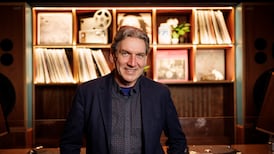Art History:A rich tapestry of Catalonian art from 1868 to 1939 is displayed in this monumental work
This book, published to accompany a current exhibition at the Cleveland Museum of Art which will be travelling to the Metropolitan Museum in New York next spring, covers a fascinating 71-year period of the history of Barcelona, Catalonia and Spain, from the September Revolution in 1868 to the end of the Civil War in 1939.
This was a time of political turmoil, which saw the toppling of the Spanish monarchy twice, the establishment of two different progressive republics, and the setbacks of another two different dictatorships. Barcelona, in spite of these constant and dramatic changes, experienced a massive industrial growth, becoming the richest city in Spain at the time. This wealth came with a strong sense of Catalan nationalism and a particularly impressive flourishing in architecture and the visual arts. The names alone in the title of the book - Picasso, Gaudí, Miró and Dalí - demonstrate the strength of artistic practice in the city. Picasso was not a Catalan, but spent some important years of his youth in Barcelona before he moved to France. In recognition of the importance of these formative years of his development as an artist, he would later donate to the city the collection of his work housed in its Picasso Museum.
A great number of scholars, mainly from the US and Spain, contribute more than 60 different essays to explain Modernisme, which is loosely the Catalan term for art nouveau; Noucentisme, which was a local and strong Classical Revival aesthetic movement; and finally, the explosion of the avant-garde, with the dominance of Surrealism in the visual arts and Rationalism in architecture.
The book, beautifully designed, has been put together by two curators of the Cleveland Art Museum, William H Robinson and Jordi Falgás, and an independent art historian, Carmen Belen Lord. It includes 600 colour illustrations, featuring more than 350 works, including painting, sculpture, photography, furniture, decorative arts and architectural drawings, to discuss and assess the visual arts in Barcelona in that period.
Besides discussing the aforementioned figures in relation to the city (Picasso, Miró and Dalí really made their careers in Paris,) it gives welcome detailed information about a myriad of lesser-known names in the English-speaking world such as Hermen Anglada-Camarasa, Ramon Casas, Ildefons Cerdá, Lluis Domenech i Montaner, Pablo Gargallo, Julio González, Joaquín Mir, Santiago Rusiñol and Josep Lluis Sert, who formed a vibrant cultural milieu. Several figures from Europe and Latin America who were active in Barcelona during these years - such as Albert Gleizes, Le Corbusier, Joaquín Torres-García, Ludwig Mies van der Rohe and Francis Picabia - are also discussed. The importance of Barcelona in the context of the European Modern movements is made very clear.
The overall, monumental project has been developed in association with the National Museum of Art of Catalonia, and the book is destined to become, without doubt, a milestone in the study of this period, with excellent and readable critical texts, by William Jeffett, Robert Lubar or Josefina Alix, to mention just a few.
THERE IS LITTLE information in the book, however, about the relation between the Catalan artists and the rest of the Spanish avant-garde, the only exception being Picasso. Dalí, for example, was closely associated with Federico Garcia Lorca and Luis Buñuel, making with the latter two of the most important films in the history of the avant-garde. The historical introduction to the book by Robinson and Belen Lord is rather biased and simplistic, and written from a Catalan Nationalist point of view, which may explain that shortfall. Catalonia is portrayed as European and progressive and the rest of Spain as Catholic and backward. This is schematic and unfair. It fails to explain, for example, that the second Spanish Republic, which was one of the most advanced governments of its time, was an all-national affair based in Madrid. It also does not explain, which is probably worse, how definitive it was for Franco to have the monetary support of the Catalan-speaking bankers, who were terrified of the advances of the left. Franco, who was from Galicia, a region also with its own language, repressed the whole of Spain. The repression was arguably worse in Madrid, where his government was based.
In terms of religion, Catalonia was equally Catholic, as it still is. Gaudí was a kind of visionary mystic, something that permeates all of his work. Dalí, on the other hand, was a great artist but nonetheless outspokenly supported Franco and in due time the new Spanish king. He was eventually made a Marquis.
THE AUSTRALIAN ART critic Robert Hughes, who writes a passionate foreword to this book (his famous book on Barcelona was published a number of years ago) also makes similar mistakes. He refers to Middle Ages authors Ausias March and Ramon Llull as Catalan writers (they were in fact Valencian and Majorcan), failing to acknowledge that Catalan is spoken in other parts of Spain outside Catalonia. The autonomous Catalan government of the democratic period has been for most of the time - contrary to what Hughes implies - a right-wing one, and a particularly conservative one, something that only changed a few years ago, when the Catalan version of the Spanish socialist party won the local elections.
The Catalans, finally, like everyone else, are not a uniform bunch of people. Some of the region's best writers, such as Juan Marsé, Enrique Vila-Matas, Nuria Amat, Juan Goytisolo, Félix de Azúa and Eduardo Mendoza, write in Spanish, which underlines the complexity of the political and social situation there.
Enrique Juncosa is a poet and the director of the Irish Museum of Modern Art. His new book of poems, Bahía de las Banderas, will appear in Spain next spring
Barcelona and Modernity: Picasso, Gaudí, Miró, Dalí By William H Robinson, Jordi Falgás and Carmen Belen Lord Yale University Press, 524pp. £40









